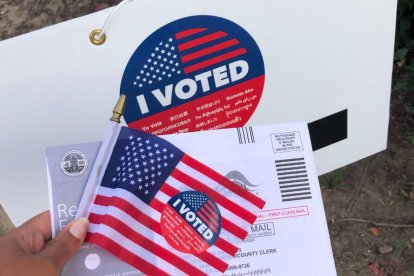Young voters disenchanted: Voting intention among 18- to 29-year-olds plummets
Less than half of respondents (49%) said they plan to head to the polls in the next presidential election, 8% less than in 2020.

(Unsplash)
There are 11 months until citizens head to the polls, and pollsters have already begun to publish their surveys not only about candidate preferences, but also about the general electoral landscape. A recent poll showed young voters' disenchantment with the candidates and political parties, which is why fewer and fewer expressed their intention to vote.
According to a survey by the Institute of Politics at Harvard Kennedy School published this Tuesday, 49% of the electorate between 18 and 29 years old noted that they plans to vote in the 2024 presidential election, reflecting a decrease of 8% from 2020 (57%).
The survey shows that the drop in voting intention among those under 30 years of age is greater among Republicans, whose projected voter turnout would plummet 10 points compared to autumn 2019 (from 66% to 56%), while Democrats suffer just a two-point drop (from 68% to 66%). A significant decrease is also seen among independents, who would fall from from 41% to 31%.
Hispanics the most turned off
Among voters aged 18-29, those who showed the greatest disenchantment with the upcoming presidential election were Hispanics. Only four in 10 (40%) stated that they would vote, a drastic fall from 56% four years ago.
African American voting intention fell 12 points (from 50% to 38%). The registration among the white community was the one that experienced the smallest decrease, from 62% to 57%.
University graduates most eager to vote in elections
Sorting by educational level, voter intention still falls top-to-bottom. The smallest decrease is observed among those with a university degree (from 72% to 69%). Those who are still studying at the university are the most dissatisfied; having dropped 13 points (from 68% to 55%). The percentage of those who neither have degrees nor are studying decreased by 8%, from 48% to 40%.












